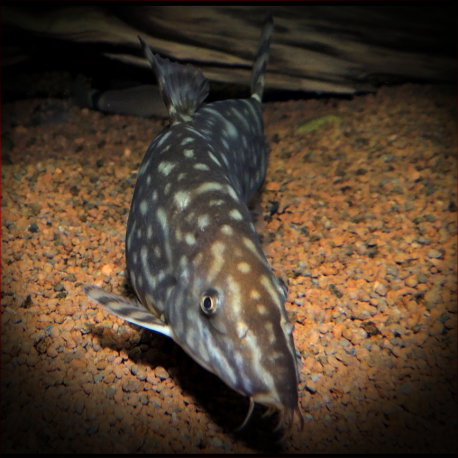More info
Datasheet
| Minimum Tank Size | 120 litres / 31.70 US gallons |
| Maximum Size | 15.2cm / 5.98inches |
| Temperament | Moderate |
| Care Description | Moderate |
| Temperature | 22.2°C / 71.96°F - 30.0°C / 86.00°F |
| Carbonate Hardness | 8-12 |
| pH | 6.0-7.5 |
General Description
The Lohachata Botia Loach, also known as the Yoyo or Pakistani Loach, is a scaleless fish characterized by its silvery/gold coloration with black irregular striping and four pairs of barbels near its mouth. Contrary to popular belief, they do possess small scales embedded in their skin. This active scavenger is semi-aggressive and prefers the company of its own kind or similar temperament fish. It tends to school with fish of the same size and age, seeking refuge in caves and holes, particularly during rest periods. Originating from streams, they thrive in aquariums with water currents.
Aquarium Setup
The Lohachata Botia Loach necessitates a tank capacity of at least 120 liters, with a pH level ranging from 6.0 to 7.5, a water hardness of 8-12 KH, and a temperature between 22.2-30.0°C. As per the table, providing ample space and hiding spots is essential for their well-being.
Behaviour
These loaches are known to be moderately tempered, exhibiting social behavior and a tendency to form schools with their own species or similar fish types. They are active scavengers that contribute to the cleanliness of the tank environment.
Feeding and Diet
As omnivores, the Lohachata Botia Loach requires several small feeding portions throughout the day. While young specimens readily accept most prepared foods, older individuals may display more selective eating habits.
Reproduction & Dimorphism
Information regarding the breeding habits of the Lohachata Botia Loach is scarce, and successful captive breeding has yet to be documented. Dimorphism in this species may relate to size, color intensity, or behavioral patterns.
Habitat and Distribution
The Botia lohachata species is native to riverine habitats in Pakistan and parts of India, where they frequent streams with moderate water flow. Their distribution in the wild contributes to their preference for aquarium setups with similar conditions.

